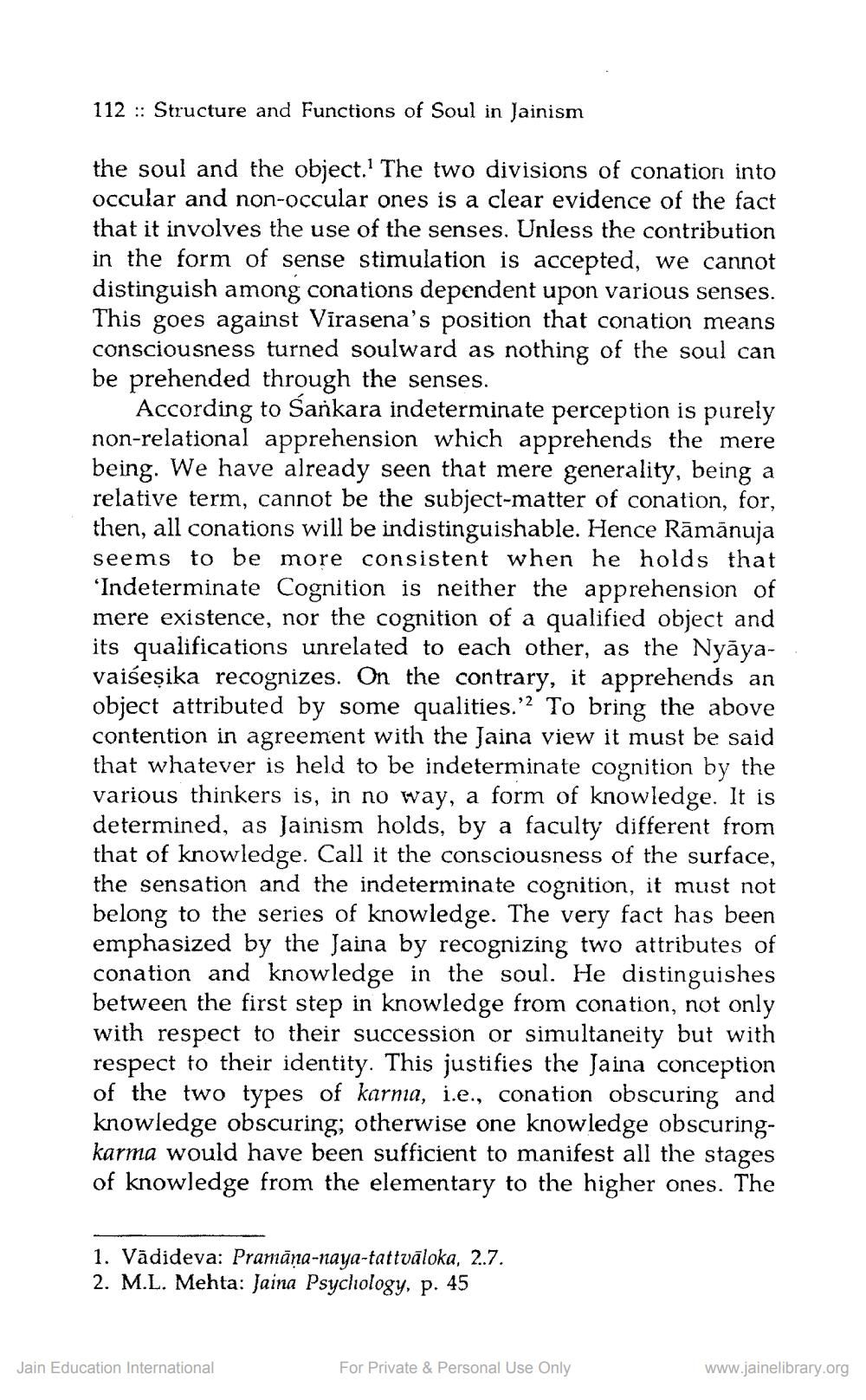________________
112: Structure and Functions of Soul in Jainism
the soul and the object.' The two divisions of conation into occular and non-occular ones is a clear evidence of the fact that it involves the use of the senses. Unless the contribution in the form of sense stimulation is accepted, we cannot distinguish among conations dependent upon various senses. This goes against Vīrasena's position that conation means consciousness turned soulward as nothing of the soul can be prehended through the senses.
According to Sankara indeterminate perception is purely non-relational apprehension which apprehends the mere being. We have already seen that mere generality, being a relative term, cannot be the subject-matter of conation, for, then, all conations will be indistinguishable. Hence Ramanuja seems to be more consistent when he holds that 'Indeterminate Cognition is neither the apprehension of mere existence, nor the cognition of a qualified object and its qualifications unrelated to each other, as the Nyāyavaiseṣika recognizes. On the contrary, it apprehends an object attributed by some qualities." To bring the above contention in agreement with the Jaina view it must be said that whatever is held to be indeterminate cognition by the various thinkers is, in no way, a form of knowledge. It is determined, as Jainism holds, by a faculty different from that of knowledge. Call it the consciousness of the surface, the sensation and the indeterminate cognition, it must not belong to the series of knowledge. The very fact has been emphasized by the Jaina by recognizing two attributes of conation and knowledge in the soul. He distinguishes between the first step in knowledge from conation, not only with respect to their succession or simultaneity but with respect to their identity. This justifies the Jaina conception of the two types of karma, i.e., conation obscuring and knowledge obscuring; otherwise one knowledge obscuringkarma would have been sufficient to manifest all the stages of knowledge from the elementary to the higher ones. The
1. Vädideva: Pramana-naya-tattvaloka, 2.7. 2. M.L. Mehta: Jaina Psychology, p. 45
Jain Education International
For Private & Personal Use Only
www.jainelibrary.org




